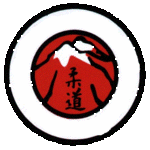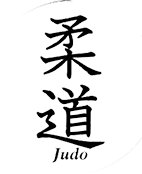2015 IJF Kata Evaluation Criteria
+3
NBK
rjamescook
Jonesy
7 posters
2015 IJF Kata Evaluation Criteria

rjamescook- Posts : 8
Join date : 2012-12-28
Location : Peterborough, Ontario, Canada
In each kata "judogi and belt" are listed as one of the evaluation criteria in the opening sequence. Presumably, one could not compete in international competition without an IJF-approved judogi and belt, so what sorts of mistakes are being evaluated here? Does it matter, for example, how the belt is tied?
Thanks for any assistance.
James
Thanks for any assistance.
James

NBK- Posts : 1298
Join date : 2013-01-10
Location : Tokyo, Japan
'Lost of bondages during the execution'
Makes it sound like the guidelines of a Roppongi S&M club. LOL
A decade invested by an organization with the global resources to fly hundreds of staff around the world, stay in five star hotels, and they still can't be bothered to find a single editor that speaks English and understands a bit of judo. I honestly will never understand it.
Makes it sound like the guidelines of a Roppongi S&M club. LOL
A decade invested by an organization with the global resources to fly hundreds of staff around the world, stay in five star hotels, and they still can't be bothered to find a single editor that speaks English and understands a bit of judo. I honestly will never understand it.

wdax- Posts : 184
Join date : 2013-01-22
rjamescook wrote:In each kata "judogi and belt" are listed as one of the evaluation criteria in the opening sequence. Presumably, one could not compete in international competition without an IJF-approved judogi and belt, so what sorts of mistakes are being evaluated here? Does it matter, for example, how the belt is tied?
Thanks for any assistance.
James
Correct size

finarashi- Posts : 507
Join date : 2013-01-11
Location : Finland
Could it be that in modern competition kata you need to
- tighten your belt at least two times and
- adjust your gi at least three times
between each technique in nage-no-kata
- tighten your belt at least two times and
- adjust your gi at least three times
between each technique in nage-no-kata

wdax- Posts : 184
Join date : 2013-01-22
Neither the scoring system itself, nor it´s application is perfectfinarashi wrote:Could it be that in modern competition kata you need to
- tighten your belt at least two times and
- adjust your gi at least three times
between each technique in nage-no-kata
Not all possible aspects of kata are covered by the evaluation criteria and other aspects are simply impossible to evaluate. But the system ist better then it´s reputation. I´ll try to explain the main points:
There are three levels of quality defined. The wording ("mistake") is problematic, but not the idea behind these levels:
- If the principle of the technique is simply not demonstrated, then the maximum score is 5 points. This is called a "big mistake"
- If the principle is demonstrated, but there is a lack of realism, effectivity etc. the score is between 5 and 7 points. This is called a "medium mistake". Typical medium mistakes are: little bit to much/less distance, not enough kuzushi, lack of speed and dynamic etc - all these things, that make the difference between good and very good.
- If the technique is demonstrated with full realism and effectivity, the minimum score is 8 Points. Everything that is still not ideal is decided an imperfection what makes the difference between 8 and the maximum of 10. These imperfections are called "small mistakes" (terrible wording for something, that is almost perfect).
Additionally some other points have to be included, f.ex. wrong positions on the tatami, missed techniques, wrong order of techniques etc. These things happen even at international championships....
8 of 10 points is 80%. So 80% is the cut. We can say for shure, that those demonstrations, which are under 80% included at least some techniques, that lacked realism/effectivity ("medium mistake"). BTW: the lowest and highest score of the 5 judges is dropped, so if the score is under 80% for a given technique, there must have been two judges, who scored a medium mistake. On the other hand, if the score is over 80%, there must have been two judges, who scored higher then 8 - what is very rare.
The total scores of the medalists of the last european championships (in %) were (groups are age-divisions):
- Nage-no-Kata 1: 77,06%, 77,84%, 80,39%
- Nage-no-Kata 2: 77,98%, 79,41%, 80,20%
- Katame-no-Kata 1: 77,45%, 77,45%, 77,84%
- Katame-no-Kata 2: 72,16%, 75,88%, 80,59%
- Ju-no-Kata 1: 75,49%, 77,25%, 80,98%
- Ju-no-Kata 2: 78,43%, 78,82%, 83,73%
- Kime-no-Kata 1: 76,52%, 78,33%, 79,85%
- Kime-no-Kata 2: 78,48%, 81,06%, 83,33%
- Kodokan-Goshinjutsu 1: 77,25%, 78,41%, 78,41%
- Kodokan-Goshinjutsu 2: 76,09%, 76,96%, 80,14%
Only 7 of 30 medalists of the EC scored higher then 80%. So the focus of the evaluation and the big challenge for the competitors is clearly effective and realistic technique to get a close as possible to 80%.
If other aspects would be included in the evaluation - f.ex. arranging the judogi, synchronized walking etc - this would take the focus a little bit away from technique and would make it possible to compensate lack of technique by these other criteria. But who wants this?
BTW: most people, who compete for the first time in international championships are convinced to have a good kata, but are surprised about their scores, which is usually around 70%... But this is 7 of 10 and you can have look at the definition of 7 ....

cokiee- Posts : 72
Join date : 2013-12-01
That last part - very true.
I further looked at the guidance from 2015, and it says that the score for fluidity and course has been removed. That means that the kata in an IJF competition perspective, will now be judged on a score of 170?
I further looked at the guidance from 2015, and it says that the score for fluidity and course has been removed. That means that the kata in an IJF competition perspective, will now be judged on a score of 170?

cokiee- Posts : 72
Join date : 2013-12-01
wdax wrote:
Correct size- and the judogi should be clean...
Further, what is correct size if I may ask? We have a Kusakura "Kata" gi - the one with the kusakura logo embroidered in white - and whilst the sleeves and pant legs fit us perfectly, the width is far too big. Spoke to the manufacturers and they said this is the non-tapered cut of the gi, and it's supposed to fit like that. Feels a bit gimmicky, but does that response have any value in and on itself?

wdax- Posts : 184
Join date : 2013-01-22
The rules for judogi are the same for kata and shiai.cokiee wrote:Further, what is correct size if I may ask?

Udon- Posts : 162
Join date : 2012-12-31
Location : Minnesota
- Post n°11
 Re: 2015 IJF Kata Evaluation Criteria
Re: 2015 IJF Kata Evaluation Criteria
I thought " fluidity" and " flow" were essential to Kodokan Judo Kata. I wonder why this is no longer a criteria in judging kata. Am I just missing something?

wdax- Posts : 184
Join date : 2013-01-22
- Post n°12
 Re: 2015 IJF Kata Evaluation Criteria
Re: 2015 IJF Kata Evaluation Criteria
It is - and it is scored as a part of the score for each technique. What was dropped is the score for overall impression of the whole kata, because there were no real criteria for the scores, f.ex. what is the difference between 7 and 8 points.Udon wrote:I thought " fluidity" and " flow" were essential to Kodokan Judo Kata. I wonder why this is no longer a criteria in judging kata. Am I just missing something?

Udon- Posts : 162
Join date : 2012-12-31
Location : Minnesota
- Post n°13
 Re: 2015 IJF Kata Evaluation Criteria
Re: 2015 IJF Kata Evaluation Criteria
Thank you, wdax.

